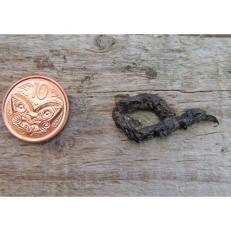

 4
4






 5
5






How Permies works: https://permies.com/wiki/34193/permies-works-links-threads
My projects on Skye: The tree field, Growing and landracing, perennial polycultures, "Don't dream it - be it! "












 2
2




How Permies works: https://permies.com/wiki/34193/permies-works-links-threads
My projects on Skye: The tree field, Growing and landracing, perennial polycultures, "Don't dream it - be it! "












 5
5




How Permies works: https://permies.com/wiki/34193/permies-works-links-threads
My projects on Skye: The tree field, Growing and landracing, perennial polycultures, "Don't dream it - be it! "
 4
4




Explore the Permies Digital Market - ebooks, movies, building plans, courses, and more. Oh my!


 5
5




There is some good studies showing that some worms will take nutrients down a meter or two and more (3 - 6 feet). They increase water penetration 10 fold. We are very successful with planting fruit trees with comfrey and then mulching with 150 - 300 mm (6-12") wood chips. Worm information https: //www.trees.com/gardening-and-landscaping/types-of-earthworms
We then plant potatoes between the wood chips and the dirt. Within a couple of weeks there is the most amazing little animal and mycellium activity. The worms are also well at work.
I'm not lost because where ever I go there I am and that light at the end of the tunnel is not a train.












 2
2




james cox wrote:if i had soil that deep i'd be jumping for joy. the top soil is compacted and about 2-4" deep in most places and under that is sand, gravel and rocks. not having time on my side i rototilled everything in and added some purchased compost/top soil. not ideal but it got me started. this spring i will just broadfork my beds and add some more compost. next year i should be able to supplement with my own compost.
really like that you are able to go the slow/experimentation route with lots of observation. as they say "the problem is the solution" i haven't quite figured it out yet so when you do please let me know

How Permies works: https://permies.com/wiki/34193/permies-works-links-threads
My projects on Skye: The tree field, Growing and landracing, perennial polycultures, "Don't dream it - be it! "
 4
4




It sounds like you don't really have top soil at all, just a layer of turf! There's a saying that the grass is always greener. I could envy you your free draining sub soil as opposed to my solid rock too. However, we each have to learn how to make the best of the site that we have. I think you've already worked out that organic matter is the key, and I think this will be the case for me too. I dug up a comfrey plant from near my orchard today, I had just a few minutes to plant a few alder trees and decided to put one right in the middle of where I planted comfrey just a few years ago (looking it up it was 2018). They were planted in totally unimproved soil and without doing anything else but letting them grow for 5 years there is now a perceivable layer of organic matter on the top of the soil and many more worms than I normally see.
 you do still wear kilts, right?
you do still wear kilts, right?I'm not lost because where ever I go there I am and that light at the end of the tunnel is not a train.












 2
2




How Permies works: https://permies.com/wiki/34193/permies-works-links-threads
My projects on Skye: The tree field, Growing and landracing, perennial polycultures, "Don't dream it - be it! "
 3
3




A tip - unless you come for other reasons, come in spring (April/May). Although slightly cooler, it's more likely to be dry, less busy and the justly infamous midges haven't started biting yet!
I personally don't wear a kilt, I'm not Scottish by birth, and contrary to family legend have no traceable Scots in my ancestry (which my husband does). Kilts tend to be a dress code for smart events for men - weddings, dances, funerals. There is one elderly gentleman locally whom I normally see in his kilt, and visitor guides will often wear them, so it is perfectly common to see.
I'm not lost because where ever I go there I am and that light at the end of the tunnel is not a train.
 4
4




Finally! An Online Garden Master Course for permies!
How Permies.com Works














 2
2




S Rogers wrote:I'm curious how your soil is doing now.

How Permies works: https://permies.com/wiki/34193/permies-works-links-threads
My projects on Skye: The tree field, Growing and landracing, perennial polycultures, "Don't dream it - be it! "

|
Bring out your dead! Or a tiny ad:
Homestead Pigs Course
https://permies.com/wiki/365748/Homestead-Pigs
|







